Dogen on visual and auditory perception
May 27th, 2006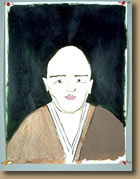 Which of the following two statements is Dogen more likely to have made?
Which of the following two statements is Dogen more likely to have made?
1. We should unite body and mind to see and hear things, because this will allow us to grasp them directly, unlike a reflection in a mirror
2. Striving with body and mind to look at and listen to things may bring us closer to reality but ultimately is not the enlightened model
We are looking at an often-overlooked portion of Genjo Koan, which the overwhelming consensus says is correctly interpreted as (1). But I think it’s (2). How about you?
Let’s start off looking at the Tanahashi/Aitken translation:
When you see forms or hear sounds fully engaging body-and-mind, you grasp things directly. Unlike things and their reflections in the mirror, and unlike the moon and its reflection in the water, when one side is illumined the other side is dark.
To oversimplify, he’s saying that full engaging body-and-mind is good, reflected stuff is bad, and that one side being dark is good again.
But first let’s make some minor stylistic criticisms
- In the original Dogen repeats “fully engaging body-and mind” with regard to both seeing and hearing, but Tanahashi omits this. All else being equal, we’d prefer to retain such stylistic devices in the original. But it may be more than merely stylistic: Dogen could be using the repetition to indicate excessive exertion..
- Dogen uses the terms kenshu and choushu for seeing and hearing, the words in question being comprised of the character for “see” and “hear” followed by that for “take”. If Dogen had simply intended “see” and “hear” he would have used the corresponding terms, but instead he makes a point of using compounds with “take” as the second element. In other words, he is emphasizing the perception aspect: “take in sights”, “take in sounds”. This is missing from Tanahashi.
- In the original, there is a but (J. suredomo ) after “grasping things directly”, but Tanahashi has omitted this and instead brought the sentence to a full stop. Again, this may not be a merely stylistic matter; the “but” can easily be read as casting a negative nuance on the “grasping directly.”
- In the original, it says “moon and water”, but Tanahashi has rendered this as “the moon and its reflection in the water.” It may be OK for him to add “reflection”, but in that case at a minimum it needs to be “the moon and the water [in which it is reflected].”
What other clues do we have about what the sentence might mean?
- The “fully engaging” part (in Japanese, koshite) reminds of the “setting forth” (J. hakobite) phrasing used a few paragraphs earlier, where Dogen says disapprovingly that “setting forth on your own to practice and illuminate things is delusion”. Actually, “fully engaging” is pretty much of an invention on Tanahashi’s part, trying to make the sentence read better under what he thinks its interpretation is. The dictionary for this character gives “raise”, or “act”. One translator uses “muster”. Many translations, including modern Japanese ones, interpret this as “bring together”, which does have some justification, but this would seem to be another after-the-fact attempt to justify an a priori interpretation.
- “Body/mind” appears in the immediately following paragraph, the famous one which states that learning the way means learning yourself, and ends by saying that letting yourself be enlightened by all things means casting off body and mind. So it seems odd that Dogen would be telling us here to gear up body and mind to perceive things and then turn around and tell us to cast off body and mind in the very next paragraph.
- Of course, the moon and water recall the famous analogy further down in the essay, where Dogen says “gaining enlightenment is like the water cradling the moon.” Again, it’s counterintuitive that he would be using the water/moon here in a negative sense, referring to unduly intermediated perception of reality, and then turn around and use it as a beautiful metaphor for enlightenment. (Although eminent commentators such as Nishiari Bokusan, the early 20th century abbot of Eiheiji, say that this is precisely what he is doing. So what do I know.)
- There is one confusing factor, which is that some versions of the original place this sentence as a continuation of the previous, which talks about how buddhas are not conscious of being so but are nevertheless buddhas and go on being so. Other versions break the portion we are looking at into a new paragraph. If it is a continuation, then it should be talking about what buddhas do. In fact, some translators even make that explicit, rendering this as “Buddhas unite body and mind to see things…”.
But beyond purely textual analysis, we can also think about what Dogen is likely to be saying. Modern neuroscience teaches us that every perception is mediated through a series of neural subsystems. In other words, there is no such thing as “direct” perception, much as we might like to think there was. Even buddhas have optic nerves and a primary visual cortex.
I’m therefore going against the tide and interpreting this paragraph as follows:
Straining with body and mind to take in sights, or straining with body and mind to take in sounds, may get you closer to reality, but this is not the way the mirror reflects things, or the way the moon and the water work. Focusing on one thing, you will lose sight of the others.

 This picture shows the
This picture shows the  Sam Harris’ book
Sam Harris’ book 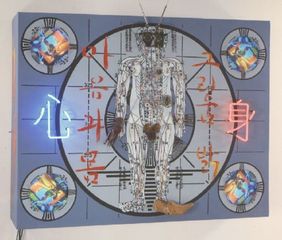 David A. Shaner discusses Dogen’s “dropping off body and mind”, something I’ve taken up more than once (
David A. Shaner discusses Dogen’s “dropping off body and mind”, something I’ve taken up more than once ( The
The 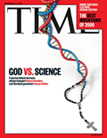
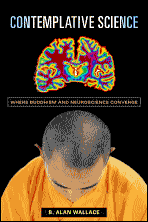
 The journal
The journal  I recently
I recently 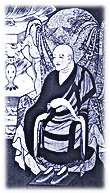 Shobogenzo is Dogen’s opus magnum, but what kinds of things did he really write about? What was his focus? I’ve done a simple analysis by fasicle:
Shobogenzo is Dogen’s opus magnum, but what kinds of things did he really write about? What was his focus? I’ve done a simple analysis by fasicle: